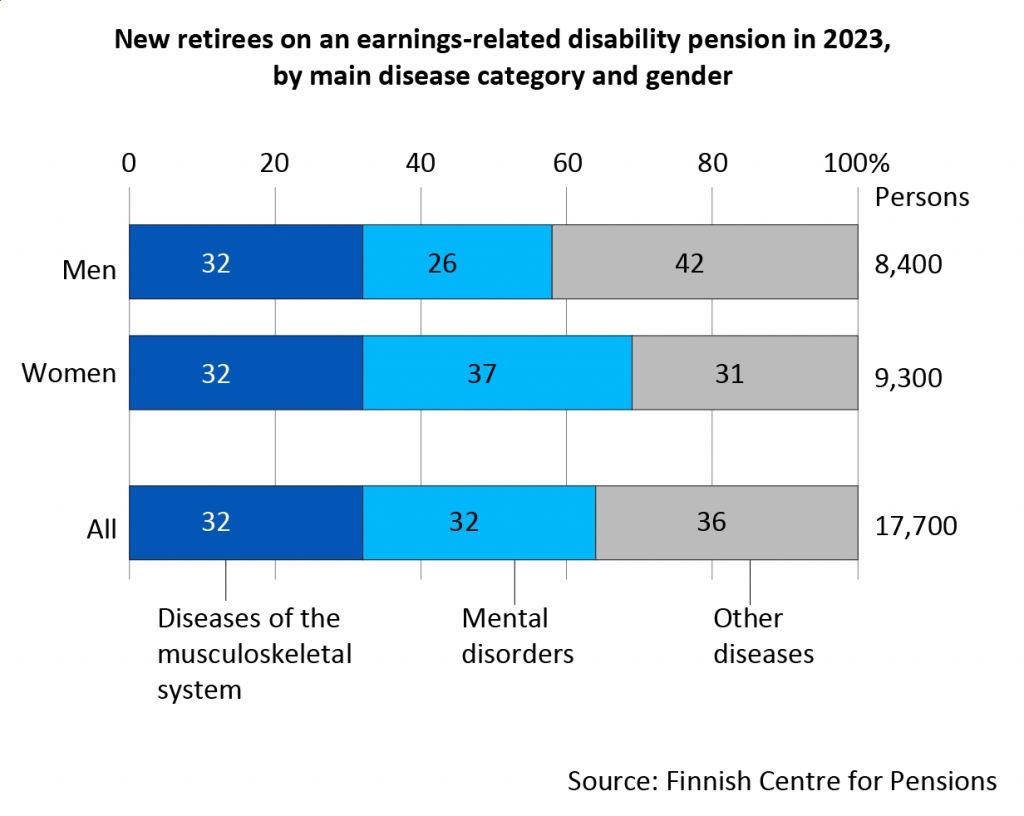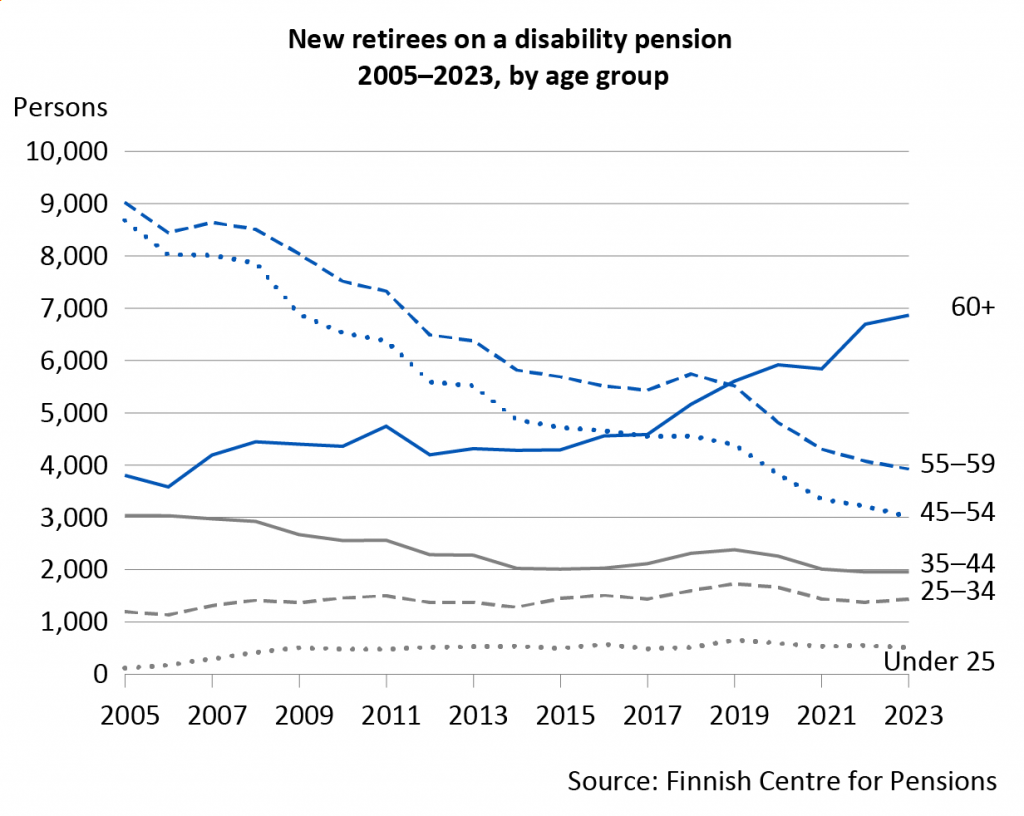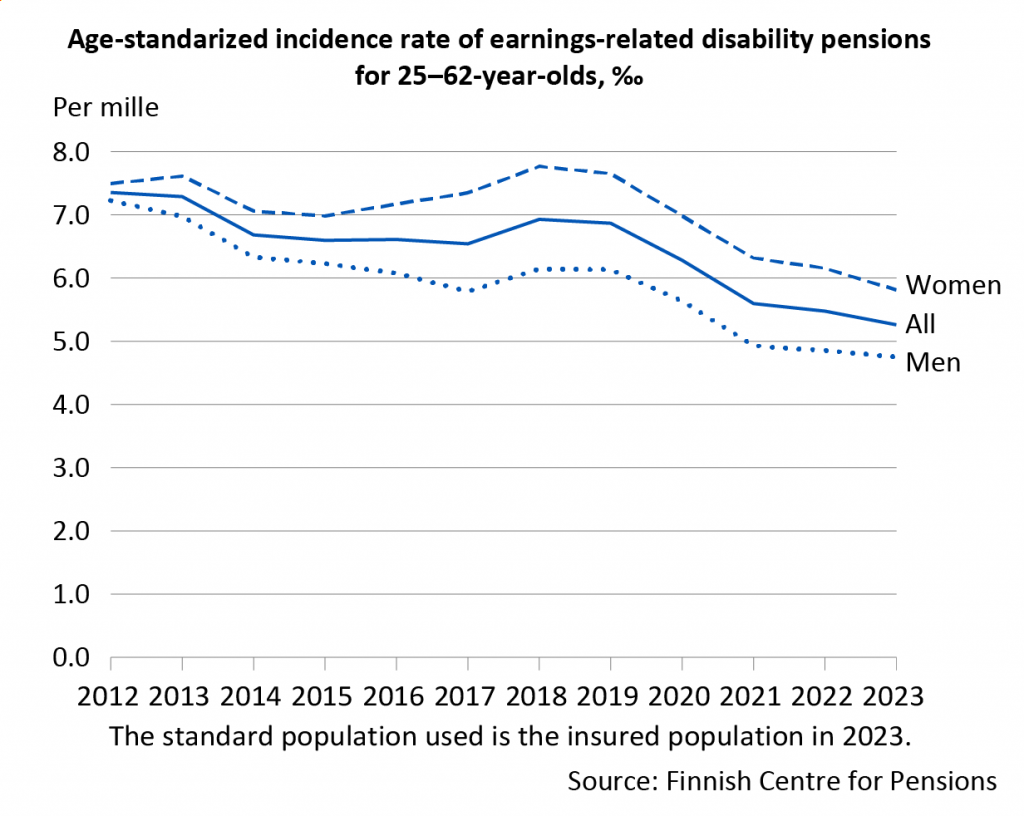Almost 18,000 new disability pensioners

In 2023, a total of 17,700 persons retired from the earnings-related pension system on a disability pension. This was almost as many as in 2022. However, the number of disabled persons in the older population is increasing. This information comes from new statistics released by the Finnish Centre for Pensions.
The reasons for disability among Finns are slowly changing. In 2023, about 17,700 persons retired on an earnings-related disability pension. This is almost as many as in 2022.
Musculoskeletal disorders were the reason for 5,700 new disability pensions. Almost as many retired because of mental disorders.
“The share of persons with musculoskeletal disorders has fallen slightly because fewer women have retired with a disability pension for this reason”, explains Statistics Planner Joonas Hautamäki of the Finnish Centre for Pensions.

In the earnings-related pension scheme, the disability pension can be granted as a full or a partial pension. The distribution of the underlying diagnoses for these pensions differs significantly. Almost half of the partial disability pensions are granted for musculoskeletal disorders. In 2023, the number of new partial disability pensions was significantly lower than before. Their share of all disability pensions fell by a quarter.
For mental disorders, the overall picture is similar to that of 2022. The number of disability pensions based on mental disorders in 2023 was the same as in 2022 for both men and women.
“The total number of new retirement incidences based on mental disorders has been declining since 2019. But now the decline has come to an end”, Hautamäki says.
Proportion of older disabled persons growing
The total number of new pensioners receiving a disability pension has declined significantly in the 2000s. In recent years, however, the number of new pensioners aged over 60 has increased clearly. A key reason for this is the increase in the retirement age, which means that disability pensions are now granted also paid to those who have reached the age of 63.
In 2023, the share of new disability pensioners among older workers grew again by a couple of percentage points compared to 2022. Older men were much more likely to receive a disability pension in 2023 than in 2022. The share of women, on the other hand, decreased compared to 2022.

Last year, more than 6,900 persons aged 60 and over retired on an earnings-related disability pension.
Incidence rate of disability pensions declining
Several factors influence the development of the number of disability pensions develops. On the one hand, the age structure of the population has reduced the number of disability pensions but, on the other hand, the number of new disability pensions has been halved. The latter means that persons of working age are better able to work throughout their working life than before. “The good trend continued also in 2023 when the incidence of disability pensions fell by more than 0.5 per cent. The trend is similar for both men and women”, says Development Manager Jari Kannisto of the Finnish Centre for Pensions.

In 2023, the incidence of a disability pension for the over-55-year-olds was more than 1.5 per cent.
Incidence of disability pensions – Risk indicator
The incidence of disability pensions shows the share of the insured population that started receiving a disability pension in the year in question.
Incidences are calculated as both age-standardized and as non-age-standardised incidences. Age-standardized incidences eliminate the effect of changes in the age structure of the population and are therefore more suitable for long-term analyses.
Before 2018, disability pensions were only paid to persons under the age of 63. For this reason, disability incidence has been presented for different age groups, but the most comparable age group in the long term is that of 25–62-year-olds. As the retirement age for the old-age pension continues to rise, disability pensions are being paid to increasingly older persons. Therefore, the age grouping of the statistics must be changed in the future.
More information

